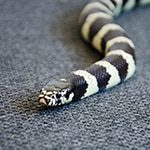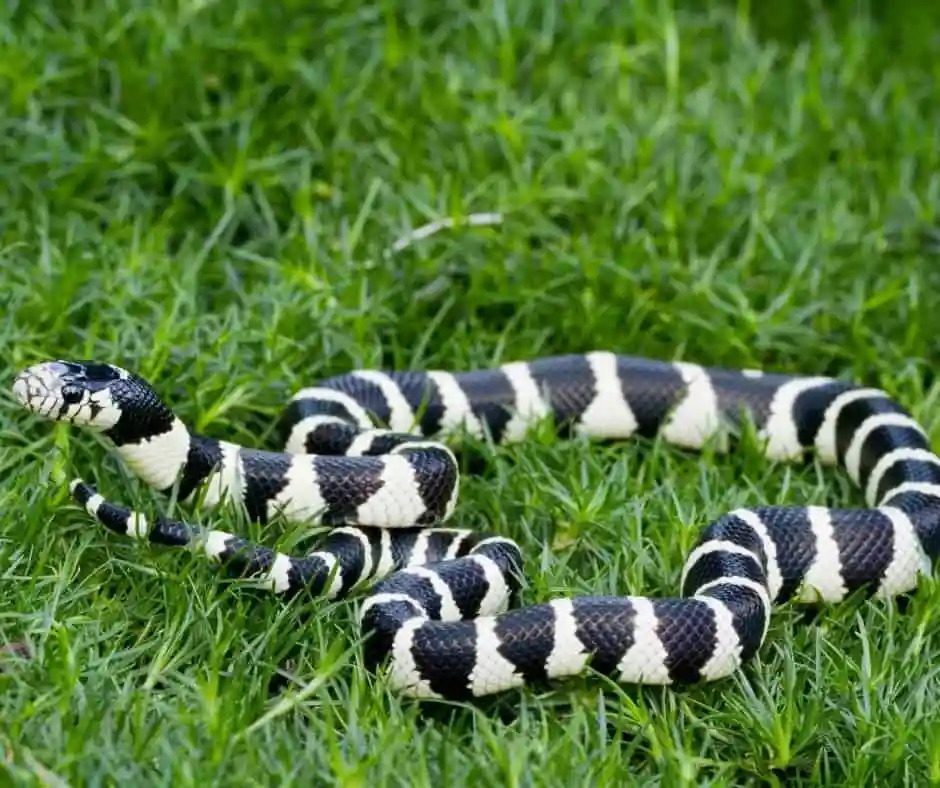
King Snake
Common Name: King Snake
Scientific Name: Lampropeltis Getula
Type: Non-venomous constrictor
Diet: Carnivore
Average Life Span: 20 to 30 years
Size: Up to 6 feet
Weight: Up to 4.8 pounds (2.2 Kg)

About King Snakes
Lampropeltis getula, commonly known as the eastern kingsnake, common kingsnake, or chain kingsnake, is a harmless colubrid species endemic to the United States and Mexico. It has long been a favorite among collectors. Eight subspecies are currently recognized.
The color pattern consists of a glossy black, blue-black, or dark brown ground color, overlaid with a series of 23-52 white chain-like rings. King snakes from the coastal plain have wider bands, while those found in mountainous areas have thinner bands or may be completely black.
Size and Behaviour
Maximum adult length of this species is 182 cm (6.0 ft). Females tend to be slightly bigger than males, maturing around 122–137 cm (4.0–4.5 ft). Males typically grow to around 90–107 cm (3.0–3.5 ft).
Common kingsnakes are diurnal. Their annual activity period is between late March or early April to October and early November. They hibernate during the winter in caves, rock crevices, mammal burrows, hollow logs, and in old stumps. During the cooler days of the spring and fall they can be found out during the day sunning themselves.
Diet & Nutrition
Adult common kingsnake diet varies across subspecies and is very broad, but published reports are available for a few representative subspecies. Eastern kingsnakes and Florida kingsnakes feed mainly on other snakes, including venomous snakes (coral snakes, copperheads, massasaugas, and rattlesnakes), eastern garter snakes, northern water snakes, ring-neck snakes, smooth earth snakes, and worm snakes. They also feed on five-lined skinks, white-footed mice, and the eggs of northern bobwhite quail.
In captivity, King Snakes are taught to eat a diet of mice and rats.
